
It was just a little over a month ago that I spent time reviewing the Yongnuo 33mm F1.4 DA DSM WL Pro lens, which I knew was the first to release from a series of three lenses in YN’s “Commander” series. I was quite impressed with the 33mm for a number of reasons, including the rich feature set, nice build, good autofocus, and quality optical performance. That covered the 50mm “normal” range, but I knew that a 23mm F1.4 wide angle and 56mm F1.4 telephoto were also coming. I didn’t know which would be first, but it turns out that it will be the 23mm, which is the subject of today’s review. The YN 23mm F1.4S DA DSM WL Pro covers the popular 35mm full frame focal length for your Sony E (tested here), Nikon Z, or Fuji X-mount APS-C cameras and their 1.5x crop factor. Does the YN 23mm F1.4 live up to the standard of the 33mm? Is it worth the asking price of about $275 USD? You can find out my full thoughts by watching the video review below…or reading on in the text review.
Follow Me @ YouTube | Patreon | Instagram | Facebook | DA Merchandise | Flickr | 500px | X
Thanks to Yongnuo for sending me a review sample of this lens. As always, this is a completely independent review. *The tests and most of the photos that I share as a part of my review cycle have been done with the APS-C mode (26MP) of my Sony a7RV camera.
__________________________________________________________________________________________________
Here’s a look at my reviews of this series of wirelessly connected lenses:
- YN 11mm F1.8 DA DSM Pro WL
- YN 23mm F1.4 DA DSM Pro WL
- YN 33mm F1.4 DA DSM Pro WL
- YN 56mm F1.4 DA DSM Pro WL
__________________________________________________________________________________________________
As noted, this is a fast “wide” lens. I love the 35mm focal length as a general purpose walkaround lens, as it is good for a lot of subjects, including people:

…but also things like landscapes:

And, when equipped with a fast maximum aperture like this lens, you can even use it for stylish shallow depth of field shots.

The YN 23mm (as we’ll call it for brevity) is a very feature rich lens, as we’ll see, but one of those innovations requires purchasing an inexpensive (under $25) remote control unit that leverages a 2.4gz wireless module built into the lens. Far from just being a basic remote control unit, this remote control allows you to remotely control focus, do aperture racking, set up A-B focus pulls, and more basic functions like take photos, start video, and do whatever you have the function button programmed to do. It’s a very clever little device particularly for video functions as you can do some of these key movements without touching the lens and introducing vibration.

The 11mm F1.8 was the first of a new series of lenses from Yongnuo that they call the “Commander Series”, and this 23mm is part of a secondary trio of lenses being released close together, including the 23mm, 33mm, and 56mm F1.4 options.

If you don’t speak Yongnuo, let me break down what those letters mean in the 23mm F1.4S DA DSM WL Pro lens designation. In many ways this follows the Fuji naming convention which puts a list of features right in the name.
- S = Sony, or Sony E-mount
- DA = APS-C
- DSM = Digital Stepping Motor
- WL = Wireless control
- Pro = upscale build, additional features
The YN 23mm has a lot going for it, including a great focal length, great functionality, and fairly strong image quality.

There are also a few weaknesses along with many strengths, and we will break down it all in our review.
Build and Handling
The 23mm focal length has been a fairly popular one over the past few years, with a variety of releases from both first party brands and the many third party brands on the market, like Sigma, Viltrox, Tokina, and Meike. The YN 23mm shows well in this class, however, with the lowest price and more features. This does come at the cost of some weight, however, as the Yongnuo is fairly heavy at 368g (13oz) in the group. It has similar external dimensions to the 33mm, but does weigh about 2g less. Fuji’s own 23mm F1.4 WR lens is actually a hair heavier at 375g, however.

Like the 33mm F1.4, the YN 23mm is 69mm in diameter (2.7″) x 87mm (3.4″) in length, which is about 9mm longer than the Fuji 23mm lens. The front filter threads are a common 58mm size which is shared across the whole trio of new lenses from Yongnuo.

You’ll note the “Wi-Fi” radio signal logo next to the lens designation. Yongnuo continues to be the only company I know of utilizing this, though I have seen Bluetooth in a few Viltrox lenses.

While some competing lenses have an aperture ring, the Yongnuo adds several other features, including the ability declick the aperture, a custom/function button, and a two mode-custom switch that allows you tweak the behavior of the ring.



As noted, this is a very feature rich little lens. We have a function/focus hold button on the left side of the barrel. That function can be assigned from within the camera.

There’s also a custom switch that allows for a few different functions. In one mode, it serves a an AF | MF switch, with mode I being AF while mode II will switch to MF.

The manual focus ring has a nice feel to it overall, though the weight is on the lighter side. There is no obvious stepping, however, so focus moves fairly smoothly as I use the MF ring. You can program the custom switch to this function by turning the camera off, setting the position to II, and then holding the custom button down. Then power the camera back on, and you will feel a click in the lens.

To use the optional remote control, turn the camera off, set the switch position to I, and then hold down the function button while turning on the camera. Now position “I” will mean that wi-fi is turned on for remote communication while position “II” will mean that it is turned off. I would recommend keeping it in the off position when it is not in use. I haven’t noticed a battery drain issue, but you can essentially assure that this won’t be an issue by turning it off.
The YN 23mm also has a robust approach to aperture control. It has an aperture control ring with one third stop detents between F1.4 and F16 along with an automatic position that can be accessed past F16 (there is a firmer detent there to keep from accidental switches between the two). The feel of the clicks is good, with clear delineation of each position but without being rough.

There is also a declick option with a switch on the right side of the barrel. Click that switch and you can smoothly rack through the aperture, which is particularly useful for video work.

The aperture iris itself has 9 rounded blades to help ensure circular specular highlights when stopped down.
The lens barrel is made of metal, and it has a nice, anodized black satin finish. The lens design is very clean and modern.

A petal-shaped lens hood is included. While it isn’t anything particularly special, it is sturdier than some and bayonets into place with a reasonably precise feel.
There is a USB-C port for firmware updates covered by a small rubber gasket. Be careful when pulling it out, as it is small and wouldn’t be hard to lose. It’s also nearly impossible to pry out unless you have a small prying tool, like a very small flat screwdriver.

The USB-C port will allow for quick and easy firmware updates, which is a smart move by Yongnuo considering that they are a third party lens maker, so they may have to rely on firmware updates to maintain compatibility with cameras in the future. The lens does include a USB-C cable in the box in case you don’t have one.
There is a metal lens mount with a weather sealing gasket attached. Yongnuo also claims a fluorine coating on the front element to resist fingerprints and moisture.

One area where the Fuji 23mm F1.4 has a clear advantage is in minimum focus distance. It can focus as closely as 19cm, but the YN 23mm can only focus as closely as 30cm. The Sigma 23mm F1.4 splits the difference at 25cm. The closest focus of the YN 23mm will give maximum magnification figure of right over 0.10x, which is not very good.
The remote control has a small LCD screen and is primarily controlled through the main knob that can be clicked to switch through various functions and rotated to control those functions. There are two buttons for programming A and B focus pulls (just set the focus position, hold down the corresponding button for one second, and either “A” or B” where appropriate will light up. There’s a power switch on the side and also a custom button on the side that corresponds to the custom button on the lens. Clicking it will enable whatever function is programmed to that button on the lens.

Using the remote isn’t always intuitive, but if you’ll spend a few minutes with the included user manual it becomes easy enough to use. Range is up to 30 meters, which definitely gives you some flexibility for controlling off camera.
The fact that the Yongnuo is both the cheapest ($268 USD) and most feature rich lens in the bunch is pretty impressive, though it is also the biggest and heaviest. This is all relative, however, as the lens isn’t abnormally large or anything.
Autofocus and Video
Yongnuo has equipped the 23mm F1.4 with what they call a “digital stepping motor” (DSM). I’m not entirely sure how a digital stepping motor varies from a typical stepping motor, so I suspect this is mostly their own marketing language. Focus speed is pretty good, and I’ve gotten good accuracy even in narrow depth of field situations.

There is almost no noise to be heard even if I put my ear next to the lens barrel. There is the slightest buzz from the motor, but so quiet as to be nearly undetectable. Focus speed is good, too, with near instant transitions from one focus point to another either indoors or out. This is one of the speedier STM motors that I’ve tested, which is great for a third party lens from a smaller brand.
I found that real world precision was good, whether shooting human subjects:

…or “animal” subjects:

For stills I’ve been impressed with the overall quality of focus with the lenses from this series. The fact that we’re getting such great autofocus from even smaller third party lensmakers like Yongnuo these days is impressive.
I used the YN 23mm casually for a wedding and other related celebrations, and it performed perfectly in the APS-C mode of the Sony a7RV that I was carrying for the trip to Arizona.



Even at F1.4 the lens produced sharp, well focused results with focus in the right spot.


As with most third party lenses, if your goal is tracking fast action, you might want to go with a Sony lens (not that there are many in this focal range), but for most people in most situations, autofocus for stills was pretty great.
Video AF
On the video front I found mostly good results. Focus pulls were smooth with minimal steps. Focus breathing is fairly low (helped by the shorter focal length).
The YN 23mm did very well with my “hand test” as well, where I alternately block the view to my face with my hand and then remove it. Focus transitioned nicely from my hand to my face, and focus breathing is low enough that the transition isn’t jarring at all.
Video footage was generally good, marred only by a bit of fringing. Here’s a freeze frame from one of my clips:

I also had fairly good results with video clips where I slowly moved the camera to force change from one subject to another at varying depths of field. Focus transitions were fairly well damped, and overall autofocus feels pretty capable. This is a solid autofocus experience all around.
Yongnuo 23mm F1.4 Image Quality Breakdown
The YN 23mm has an optical design of 11 elements in 9 groups. The majority of these (7!) are exotic elements, including high refractive elements and ultra low dispersion elements. A lot of fancy glass for an inexpensive lens!

The MTF chart shows a very consistent performance with a nearly flat performance across the frame. The F8 graph levels out some of the dips and rises, and it is one of the rare lenses where the corner performance (at least on the sagittal plane) is better than the center performance. This may be a budget lens, but that’s not budget sharpness.

The biggest practical negative I saw was some fringing in certain situations, but overall I was pretty impressed with the general optical performance. Wide open sharpness was particularly impressive for a lens with this price tag and a maximum aperture of F1.4. In this shot you can see some of the fringing that is present around the needles of the desert cholla.


You can see in a more pronounced way on this torture test here:

That fringing was evident on my chart as well, so just be aware that this is probably the most significant optical issue with the YN 23mm.

Lateral chromatic aberrations (LaCA) are much less of an issue, with only very minimal amount of fringing near the edges of the frame.

Often people are interested in the amount of coverage APS-C lenses provide on full frame cameras. This is not some kind of “stealth full frame lens”, as most of the additional full frame image circle is obscured by the “mechanical vignette” of the lens not covering the full frame portion of the lens.

Here’s the difference in framing, which is negligible enough to not be worth considering.

This is an APS-C lens, period. As is almost always the case, you would be better served by buying a full frame lens if you want full frame coverage.
There’s a bit more barrel distortion than I expected in a normal lens along with some vignette.

I used a +12 to correct the barrel distortion, though it’s not completely linear so my manual correction is somewhat imperfect. The vignette is fairly low, requiring just a +32 to correct, or about one stop.
So how about resolution and contrast? My tests have been done on a 26MP APS-C mode of my Sony a7RV. Here’s the test chart:

Here are F1.4 crops at roughly 200% from across the frame (center, mid-frame, and lower right corner).



I was curious to see how this performance compared with the recent YN 33mm that I reviewed, and I found that the 23mm was slightly better in terms of resolution and contrast across the frame. The lenses didn’t meter identically (the 33mm metered slightly overexposed and the 23mm slightly underexposed), but the results here do align with what I saw in real world performance.

I was generally satisfied with the amount of sharpness and contrast I could achieve at F1.4. This is a perfectly usable lens wide open.



Stopping down to F1.8 improves contrast a bit, but a more noticeable improvement comes at F2, where contrast is definitely darker and details pop more.

This shot of Ferrari at F2 shows great detail and contrast even with a deep crop.


By 2.8 I see a good performance right off into the corners.

You’ll see a bit more improvement as you stop down into the prime landscape apertures like F5.6-F8:

That means that the YN 23mm is a very nice landscape lens, providing good detail and contrast across the frame.
Sharpness peaks around F5.6, with F8 being very close to the same. Diffraction will start to soften the image after that, with a mild amount at F11 but a more obvious amount by F16. Diffraction isn’t as obvious at the 26MP level on Sony, but expect this to be more pronounced if you are using a Fuji 40MP sensor.

Often the tradeoff for a bit of uncorrected fringing is softer bokeh. I wouldn’t consider the bokeh quality to be absolutely top shelf, but it is pretty nice overall.

Here’s a few more shots both with and without specular highlights for your examination.



There’s nothing top tier there, but nothing objectionable, either.
Flare resistance is mostly good. There’s no veiling in this shot right into the bright Arizona sun and only minimal ghosting artifacts.

I can see a bit of a light leak in the lower left corner of this image, but I don’t think it is damaging the image.

Sunstars are very defined when the lens is stopped down. I find them a little too dominating for my tastes, but your mileage may vary.

Yongnuo’s optical glass is fairly good but not top notch. Colors were mostly good, however, though not quite as special as what you’ll get from higher end lenses.



But it’s important to remember that this is a lens that costs under $270. I would say that the overall rendering is pretty great for the money. When compared to other lenses in this price class I think the optics are competitive and the feature set is clearly much more robust than what competing lenses offer. If you’d like to see more image samples, check out the image gallery here.
Conclusion
The Yongnuo 23mm F1.4S DA DSM WL Pro is a pretty attractive option if you’re looking for a 35mm equivalent lens on your APS-C camera. It is a feature rich, focuses well, has weather sealing, and delivers a pretty strong optical performance, too. The price is more similar to an F1.8 lens than an F1.4 lens, which doesn’t hurt, either.

It’s a better lens than those priced near it, and more feature rich than just about all the lenses priced higher. It doesn’t reach the optical achievement of a lens like the Viltrox Pro AF 27mm F1.2, but that’s a different class of lens anyway.

I continue to be impressed by just how good “cheap” lenses are these days. In 2016 I reviewed a Samyang 21mm F1.4 fully manual lens that had zero features, and that lens cost $450 at the time. Flash forward eight years and all the inflation that we’ve seen, and you’re still getting a lens with autofocus, weather sealing, a declickable aperture, a custom button, the ability to wirelessly control the lens…and paying nearly $200 less. That’s really pretty astounding when you stop and think about it. I actually had fun shooting with the YN 23mm, which is pretty amazing considering how many lenses I’ve reviewed over the years. If you are looking for this particular focal length, the Yongnuo YN 23mm F1.4 well worth consideration.

Pros:
- Nice looking lens with nice build
- USB-C port for firmware updates
- Good manual focus ring and experience
- Very feature rich
- Weather sealed
- Declickable aperture
- Wireless remote control
- Custom button
- Autofocus motor is quiet and fast
- Good sharpness wide open
- Excellent sharpness stopped down
- Fairly good bokeh
- Great price to performance ratio
Cons:
- Some fringing issues
- Gasket for USB-C is hard to remove and easy to lose
- Low magnification
_________________________________________________________________________
GEAR USED:
Purchase the Yonguno 23mm F1.4 @ B&H Photo | Amazon | Amazon Canada | Amazon UK | Amazon Germany
Purchase the Yongnuo 33mm F1.4 @ B&H Photo | Amazon | Amazon Canada | Amazon UK | Amazon Germany
___________________________________________________________________
Purchase the Sony a7RV @ B&H Photo | Adorama | Amazon | Camera Canada | Sony Canada | Amazon Canada | Amazon UK | Amazon Germany
__________________________________________________________________
Purchase the Sony a6600 @ B&H Photo | Amazon | Camera Canada | Amazon Canada | Amazon UK | Amazon Germany | Ebay
Purchase the Sony a6400 @ B&H Photo | Amazon | Amazon Canada | Amazon UK | Amazon Germany | Ebay
_________________________________________________________________
Want to support this channel? Use these affiliate links to shop at: B&H Photo | Amazon | Adorama | Camera Canada | Amazon Canada | Amazon UK | Ebay | Make a donation via Paypal
Buy DA Merchandise https://bit.ly/TWIMerch

Keywords: Yongnuo, YN, 23mm, F1.4, Yongnuo 23mm F1.4, DSM, WL, F1.4, Pro, APS-C, Review, Sony a6700, a6000, a6400, Sony a7RV, Wireless, Review, Hands On, Dustin Abbott, Real World, Comparison, Sharpness, Bokeh, Flare Resistance, Autofocus, Image Quality, Sample Images, Video, Photography, let the light in, weathersealing, #letthelightin, DA


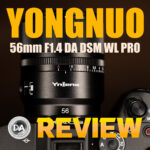
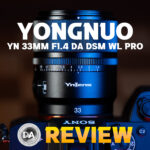
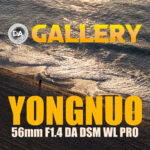
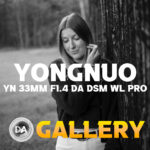
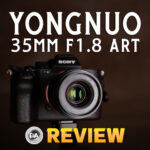
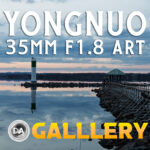
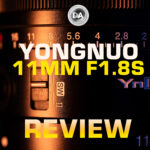
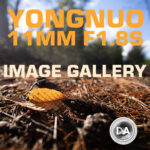

[…] YN 23mm F1.4 DA DSM Pro WL […]
[…] YN 23mm F1.4 DA DSM Pro WL […]